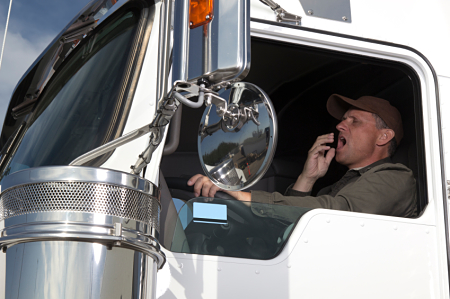Technology detects distracted, drowsy driving
Drivers facing long hauls often have to deal with fatigue and the drowsy driving that accompanies it. Toss in driver distractions and the recipe for disaster is in the mix.
Technology, however, could provide a solution.
Using advanced analytics and video monitoring to identify patterns of behavior – such as lane departure or following too close – truck drivers can now use technology to prevent some crashes.
ActiveVision, developed by Lytx, has launched a new system to combat the age old dilemma of drivers driving drowsy or distracted.
Lytx said the new service is a “revolutionary and comprehensive safety solution that helps detect and address, both in real time and over time, distracted and drowsy driving and following too close, all potentially dangerous and costly driving behaviors that often go undetected.”
These behaviors contribute to 6,000 deaths, 500,000 injuries, and more than $175 billion in economic costs each year, according to the National Highway Traffic Safety Administration.
ActiveVision’s helps to identify patterns of behavior that are indicative of distracted and/or drowsy driving and then uses video to help pinpoint the possible root cause.
When combined with the Lytx DriveCam safety program, the ActiveVision service is a comprehensive program that can help drivers improve performance and help mitigate risk.
Lytx said unlike other video-based safety systems currently available, the service combines three technology advancements to address distracted and drowsy driving and following too close:
- Seamless integration with in-vehicle technology and Lytx DriveCam sensors for an extensive level of data collection
- Advanced data analytics to form a holistic view of what’s happening on the road
- Comprehensive coaching including in-cab alerts and prompts and post-drive coaching to help drivers continuously improve their skills
“The most sophisticated technology in the cab will always be the human operator,” said Lytx Chairman and CEO Brandon Nixon. “So we created a system to augment the natural strengths of the human driver that leverages vast amounts of data, understands what that data means – and what’s important, and how that data can be used to make the roads safer for everyone. The ActiveVision service is the latest innovation from nearly two decades of research and development, and the insights from expert human review of more than 28 billion miles driven.”
The ActiveVision service executes sophisticated pattern detection to better surface and address otherwise hidden patterns, such as lane departures, improper fitness to lane, or following too close, which are top indicators of risky driving behaviors.
“Lytx, with the launch of the ActiveVision service, is priming to deliver comprehensiveness in the video safety market,” said Sathyanarayana K, research manager for Frost & Sullivan. “With real-time driver alerts and feedback, the Lytx ActiveVision service can reduce the risk of potential collision through a collective understanding of drivers’ in-cab behavioral patterns and on-road driving style (i.e., lane departure, following distance, and fitness to lane).”
ActiveVision’s physical component is housed within the new ER-SV2 Event Recorder, Lytx’s fifth-generation event recorder built for the future of video-based safety. The ER-SV2 collects video feeds from outside and inside the cab, as well as information from technology already in the vehicle to provide a broad perspective on what’s happening when, and how performance can be improved. In addition to camera technology, the ER-SV2 includes an LED and audible user interface, Bluetooth and Ethernet connectivity, components such as accelerometer and gyro sensors and systems to alert lane departure warnings, and headway warnings.
ActiveVision taps into many relevant data sources to inform both in-cab alerts and post-drive coaching feedback based on the overall environmental context for the purpose of providing more relevant feedback. Some driving behaviors, for example, are safe in good weather conditions or when few cars are on the road, but are hazardous when road conditions take a turn for the worse – the Lytx ActiveVision service is also highly adaptable to allow for the ability to expand as sensor technologies advance and as understanding of road safety evolves.
“Today, thanks in part to the proliferation of personal technology, commercial drivers and the drivers around them are bombarded with even more non-road related distractions,” Nixon said. “Simple monitoring and intervention systems alone may help bring attention to immediate, urgent safety behaviors, but they do little to improve driving for the long term. Furthermore, because these systems may generate frequent false alerts, they have the potential to contribute to driver complacency.”
The ActiveVision service is in part, powered by AutoTune, that minimizes the likelihood of false alerts. The service’s pattern recognition algorithms, computer vision and machine learning technologies help create a comprehensive view of what’s happening and how potentially dangerous situations can be mitigated.






